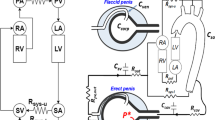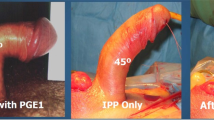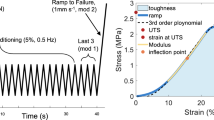Abstract
Purpose: Penile buckling force was analytically described in terms of its constituents. In addition, theoretically-derived buckling force data were compared to clinically measured data and the influence of each constituent on penile buckling force data was assessed.Methods: Using engineering buckling theory for a column, a mathematically-derived penile buckling model was developed which incorporated geometric and hemodynamic data obtained by dynamic infusion pharmacocavernosometry studies in 21 impotent patients (age 43, range 24–62 y) as well as penile tissue mechanical characteristics previously developed (Part I).Results: In 17 of 21 patients the mean difference between theoretically derived and clinically measured buckling force data was 0.33±0.25 kg (r=0.96). Factors which increased penile buckling forces were: high intracavernosal pressure values (rigidity was related to pressure in an exponential-like fashion); high penile aspect ratio (D/L) values (relatively large diameter/short length penile geometry) and high flaccid diameter; and high cavernosal expandability values (a measure of the ability of the corpora to approach its erect volume with relatively low intracavernosal pressures).Conclusions: Pressure-volume data (pressure, geometry and tissue characteristics) obtained during erectile function testing have been shown, for the first time, to theoretically predict the magnitude of clinically-measured penile buckling forces.
This is a preview of subscription content, access via your institution
Access options
Subscribe to this journal
Receive 8 print issues and online access
$259.00 per year
only $32.38 per issue
Buy this article
- Purchase on Springer Link
- Instant access to full article PDF
Prices may be subject to local taxes which are calculated during checkout
Similar content being viewed by others
Author information
Authors and Affiliations
Rights and permissions
About this article
Cite this article
Udelson, D., Nehra, A., Hatzichristou, D. et al. Engineering analysis of penile hemodynamic and structural-dynamic relationships: Part II—Clinical implications of penile buckling. Int J Impot Res 10, 25–35 (1998). https://doi.org/10.1038/sj.ijir.3900311
Received:
Revised:
Accepted:
Published:
Issue Date:
DOI: https://doi.org/10.1038/sj.ijir.3900311
Keywords
This article is cited by
-
Penile intracavernosal pillars: lessons from anatomy and potential implications for penile prosthesis placement
International Journal of Impotence Research (2016)
-
Central nervous system-acting agents and the treatment of erectile and sexual dysfunction
Current Urology Reports (2007)
-
Der Einfluss neurologischer Erkrankungen auf Partnerschaft und Sexualität
Der Urologe (2006)
-
Initial validation of a novel rat model of vasculogenic erectile dysfunction with generalized atherosclerosis
International Journal of Impotence Research (2005)
-
Association between International Index of Erectile Function and axial penile rigidity in patients with erectile dysfunction
International Journal of Impotence Research (2003)



